Low back pain is a serious disease of the spine since it can cause severe discomfort and lead to various complications. For this reason, it should promptly and properly treated. This can be done at home using medications, folk remedies, physical education and physiotherapy. All therapeutic measures must be approved by the technician, otherwise there is a risk of complications.
What is osteochondrosis
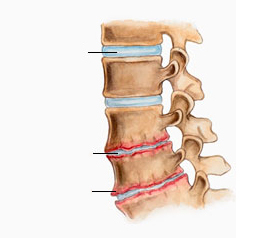
Osteochondrosis — degenerative-dystrophic disease of the spine (DSP ) that lead to impaired tissue structure of the vertebrae and intervertebral discs. This provokes a decrease in their elasticity and shape change. This significantly decreases the space between the vertebrae and the instability of the spine in this place.
In pathological destruction of tissues is pinched nerve endings going from the spinal cord, which leads to a constant tension of the dorsal muscles. Against this background, there is pain and other characteristic symptoms. Clinical signs can differ depending on which segment has undergone degenerative disorders. Allocate chondrosis of the spine following departments:
- cervical;
- breast;
- lumbar.
If the pathological process affects multiple segments, such osteochondrosis polysegmental. Common disorders have complicated symptoms and are diagnosed much more difficult because it can affect areas both near and remote from each other. For example, osteochondrosis of the cervical and lumbosacral.
There are 4 stages of osteochondrosis:
- First. Characterized by primary disturbances in the region of the intervertebral disc. Usually this stage the cartilage surrounding the vertebrae, covered with cracks. As a result, starts the reduction of the clearance between the discs.
- Second. Cracked the annulus is narrowed so that the connection and the soft muscles of the spine begin to touch and RUB against each other. At this stage, a person may show the first pain syndrome paroxysmal character. The second stage leads to the formation of instability of the vertebrae.
- Third. Wipes away the cartilaginous pads between the discs. Thinning is when performing radiography, and the symptoms are white expressed, to be intensified. At this stage, the pain can be removed only by the use of hard drugs.
- Fourth. Excessive vertebral instability, since they formed bony outgrowths — osteophytes. They injure the nerve roots. Usually at this stage the symptoms a few abates, but is seasonal (peaks exacerbation occurred during the fall and spring).
Psychosomatics degenerative disc disease
Psychosomatic causes of disease – a new direction of finding the prerequisites for its formation. Psychosomatics suggests the impact of psychological factors on the development and course of physical disease. The connection between bodily and mental problems is really tight and seemingly healthy person can suffer from regular pain. When degenerative disc disease some people have not provided objective reasons for the disease, but she continues to progress.
Up to 30% of patients after a visit to the doctor indicate troubles such as:
- Constant stress;
- Chronic experiences;
- Nervous strain;
- Problems in the family;
- Conflicts;
- The moral breakdown.
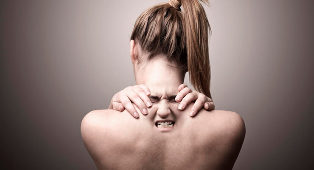
In this case, psychosomatics in the syndrome of lesions of the spine can clearly be seen, the person "bends" under the weight of problems, which negatively affects the spine. If pathology has similar causes, treatment of degenerative disc disease is complicated medicines usually do not help. The aggravation of the pathology that occur during a new wave of stress, and the physical reasons for them.
Psychosomatics especially often affects the cervical spine, but pain can be wandering around the vertebral column. Treatment of degenerative disc disease should start with the search and solution of psychological problems under the supervision of a therapist.
The causes of osteochondrosis
The main factor for the development of osteoarthritis is an uneven load on the spine.
Common cause of irregular (uneven) load distribution on the spine are:
- the habit of wearing the bag on one shoulder or in one hand
- wrong sitting position
- sleep on a too-soft kind of mattress,
- sleep on a high pillow,
- wearing anatomically incorrect kinds of shoes.
Additional risk factors include:
- physical inactivity (sedentary lifestyle),
- the presence of excess weight
- injury keeps,
- injuries of the lower extremities,
- flat feet,
- any other disorders of the musculoskeletal system,
- age-related degenerative processes in the spine which worsens the blood supply of the vertebral column.
The stages of development of osteochondrosis
Developing, low back pain is always to pass four stages:
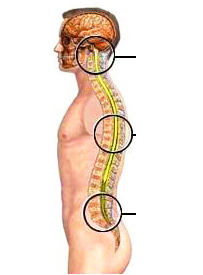
- The first stage is characterized by the appearance of the pathology in the nucleus of the intervertebral disc. Due to the unnatural load begins a process of dehydration (dehydration) of the nucleus, which reduces the height of the intervertebral disc and the appearance of cracks in the fibrous ring.
- During the second stage of the disease there is discomfort in the form of pain, especially under certain types of loads, movements and body positions.
- The third stage of osteoarthritis is characterized by the formation of prolapses and protrusions. It may be accompanied by subluxation and/or development of osteoarthritis of the intervertebral joints. With certain movements you may feel stiffness and lack of mobility. In the extremities can cause tingling and numbness.
- During the fourth stage osteoarthritis of the body trying to correct the consequences of hypermobility (excessive mobility) of the vertebrae begins to adapt to the irregularities of the functionality of the spine and at the points of contact of the vertebrae begin to form osteophytes (new bone formation) in order to improve fixation of vertebra.
But, unfortunately, in some cases, the osteophytes cause the pinched nerve and further damage to the vertebrae. As a result, in the intervertebral discs and the joints begins fibrous ankylosis.
Symptoms of degenerative disc disease
The main symptoms of osteoarthritis is discomfort and/or pain in the neck and keeps.
Those how will be expressed discomfort, as well as those that additional symptoms will manifest themselves during the development of osteoarthritis depends upon stage of disease and each individual case.
Pathology of the intervertebral discs of the cervical and lumbar are much more common than degenerative and dystrophic changes in the sternum.
Symptoms of osteoarthritis include:
- periodic or permanent feeling of fatigue keeps,
- slight or pronounced (depending on the stage of the disease) pain in the neck, the keeps, chest, shoulder girdle,
- heavy constrained movement of the upper limbs.
The clinical picture of degenerative disc disease largely depends on the location (location) of disease, the degree of development of the process, the individual peculiarities of the patients.
Pathology of the intervertebral discs, displacement, protrusion, herniation and the growth of osteophytes lead to different consequences.
Among the most common is the disruption of blood circulation in the tissues, a pinched nerve, dysfunction of the spinal canal, edema, fibrosis of tissues and structures.
Such effects may be accompanied by a huge host of different symptoms, which leads to difficulty in accurate diagnosis.
The most common symptoms of degenerative disc disease include the following symptoms:
- pain in the back, neck, and lower back, in the shoulder girdle, the ribs,
- the discomfort and stiffness of the torso that occurs when certain body positions: tilt, swivel, increase soft muscle tension,
- numbness of the upper and lower extremities,
- m azovi and joint discomfort, spasms Azov m,
- headaches, dizziness, fatigue,
- pain in region of heart,
- violation of the sensitivity of the hands
- m Yazov weakness.
Diagnosis of degenerative disc disease
For accurate diagnosis specialist assigns the following instrumental methods of examination, such as:
- x-rays of the spine,
- if necessary myelography of the spine
- a neurological study of the sensitivity and reflexes of the spine.
Additional methods that may be prescribed by a doctor, to diagnosis and the stage of pathological processes have been installed as accurately as possible are:
- computed tomography of the spine
- nuclear magnetic resonance,
- magnetic resonance imaging.
Possible complications
Without a lot of special attention to treat the first symptoms of degenerative dysfunctional processes in the connective tissues of the spine. Such a body can have a dramatically negative impact on the work of all internal organs. An imbalance of the functions will grow like an avalanche, and a man could suddenly be in a hospital bed. Reduced mobility of the spine, violation of the speed of passage of signals and obstruction of nutrients in certain areas of the body lead to the development of dysfunction in the bone-m atovi system, the joints and ligaments.
Partial or complete destruction of the intervertebral ties leads to the development of numerous chronic diseases. Even a slight pain in the spine, the connection suddenly appeared, and just as quickly disappeared, should make a person undergo a full examination. This will help to identify centers of origin of the disease and use preventive measures to prevent the further development of the disease.
Not paying attention to the first signals, it is possible to encounter serious problems:
- The appearance of sharp, prolonged pain in the head, headaches and dizziness.
- Problems in the cervical spine can cause a sudden vision loss.
- Often hearing loss is a consequence of the disruption of the upper spine.
- The development of degenerative disc disease can cause autonomic dysfunction.
- Problems in the lower back lead to a sharp aggravation of diseases of the genitourinary system.
- The absence of proper treatment of degenerative disc disease leads to chronic radiculitis and sciatica.
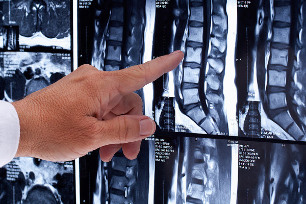 Heavy loads and absence of systemic treatment can become a cause of intervertebral hernia.
Heavy loads and absence of systemic treatment can become a cause of intervertebral hernia.- People facing diseases such as lumbago, spondylosis, lumbodynia.
- Long-term development of degenerative disc disease without qualified treatment leads to stenosis of the vertebral channel, spondylosis, osteophytes.
It should be clearly understood that any irregularities in the spine will lead to the development of more complex chronic diseases of internal organs. Damage to the neurovascular bundles hampers the rhythm of bodies disrupts the flow of the necessary quantity of nutrition and removal of toxins.
This adversely affects the entire body. Accumulate inside the tissues of the damaged cells and toxins and stimulate the growth of malignant tumors. Can suddenly the connection to find out what great health suffered serious damage from a slight pain in the lumbar region, the keeps or neck.
Treatment
To successfully treat low back pain, it is necessary to conduct more survey and to establish an accurate diagnosis. At first, the doctors carried out external examination of the patient, collect anamnesis of disease, then use of laboratory and instrumental methods of research.
There are 3 ways of treatment:
- medication;
- physiotherapy;
- surgical.
Great benefit in the treatment of osteoarthritis bring a special diet, the observance of bed rest and minimizing load on the spine. At rest it is recommended to use a hard surface instead of soft mattress.
In house conditions for treatment of the disease, you can resort to the first two methods. It is desirable to combine them. To enhance their actions can be entered in the national therapy can.
However, to self-medicate is highly undesirable. All activities and procedures must be approved by a specialist. In the treatment of degenerative disc disease must adhere to certain rules in the use of certain methods.
In this case, if the provision of medical medical assistance did not produce results and the disease progresses, the prescribed surgical treatment. Surgical intervention is performed to stabilize the structure of the spine, removal of spinal disc herniation or disc completely amazed.
Drugs
Medical treatment of osteoarthritis should be comprehensive, aim at the relief of pain and elimination of other white symptoms. For this purpose, different groups of drugs:
- Nonsteroidal anti-inflammatory. They are designed to eliminate inflammation and pain. Also they relieve the swelling of tissues.
- Sedative. They are used for the relief of pain, but do not affect the pathological process.
- M Azov relaxers. Used to relieve mild muscle spasm in the spine, thereby significantly decreasing pain. They act by blocking the receptors affected m asovih fibers, resulting in impaired conduction of impulses in the spinal cord. The effect of these drugs is small, but this time m Azov fibers have time to recover the normal tone and use of own protective mechanisms against degenerative-dystrophic processes.
- Vitamins B, D, A, E, C, phosphorus and calcium-containing medications. Vitamin-mineral complexes is necessary to fill in the body of substances that are involved in the formation of bone and cartilage, metabolic processes.
- Chondroprotectors
- Vasodilator drugs.
In pathology of locomotor doctors recommend the use of chondroprotectors, which have a cumulative effect and impact on the human body after a certain hour, and help to restore the intervertebral disc. These medications are used long period, up to 2-3 months. And chondroprotectors seriously degrade the liver and the gastrointestinal tract, therefore they should be combined with probiotics.
Physical therapy
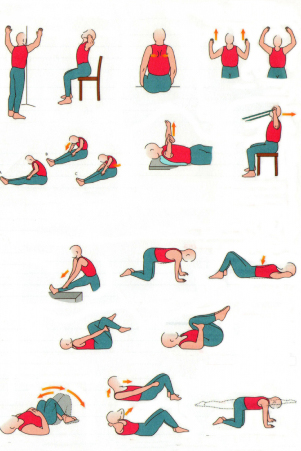
In the treatment of degenerative disc disease would be a useful exercise (physical therapy). On the musculoskeletal system can have a beneficial impact moderate exercise. They stimulate metabolism, restore mobility of the spine and soft strengthening the muscular corset.
Methodology and scheme of medical gymnastics should choose a doctor, as it can vary depending on which part of the spine exposed to the pathological process. Therefore, it is desirable that classes were held under the supervision of a specialist. After the development of the program of physical therapy can continue at home.
For example, when the diagnosis of osteochondrosis of cervical Department recommends these simple exercises:
- Tilt your head forward and click on the area of the forehead woven fingers. The patient must prevent pressure. A similar exercise is then performed by acting on the occipital portion, left and right temple.
- Press the forehead with four fingers, as if stretching the skin for 45 seconds. Working in different directions. This exercise is intended to restore blood circulation.
- To sit on a chair or on the floor, keep your back straight and slowly tilt your head back. Hands you must gently pull the chin up and down. Then make the turns head left and right.
- Try to get a chin chest. In this position it is necessary to cross hands on the back of his head and press him. In a state of stress necessary to stay on for 1 minute, and then follow the movement of the shoulders, lifting them up, trying to touch your ears.
Physiotherapy
Drug treatment gives a good result if we combine it with physiotherapy. For the condition of the vertebrae useful magnetic therapy, electrophoresis, ultrasonic therapy, etc. Some types of procedures can be performed at home if you buy appropriate portable devices. The beneficial influence of mineral waters and therapeutic muds.
In the absence of contraindications to massage Khvorov, you can visit a chiropractor. In the treatment of osteoarthritis can be applied reflexology — the pressure points of the body. At home you can carry out the massage. There are several techniques to help eliminate pain and toning muscles:
- light stroking of the vertebral region of one or both hands;
- the kneading of muscles tingling or a circular motion, lightly pressing with fingertips;
- the kneading of muscles with palms;
- straightforward study of the trapezius muscles;
- longitudinal and coracoid squeezing, massaging gently;
- rubbing the gaps between the ribs.
Folk remedies
To relieve pain you can use tools for the popular recipes. The result of herbal treatments and other natural ingredients will only appear when their long-term use.
Folk remedies is better compared to medication, since the latter during long-term use can seriously harm the intestines, liver and pancreas. Therefore, alternative therapies it is desirable to use after the relief of acute pain drugs. Presented methods need to gradually substitute medications according to doctor's recommendation.
You can mention a few effective recipes:
- Honey and potatoes. It is necessary to take a few potatoes, chop them on a grater, add the same amount of honey. Components should be thoroughly mixed, put in cheesecloth and use as a compress on the painful area. Verification of the application need to wrap a scarf and leave in this position for 1 hour.
- Fuck. Should take 1 leaf and steam with boiling water. It is necessary to turn the inner side to the painful area and apply it. The tool should be secured firmly and wrap with a scarf. This procedure must be performed at night, and to remove POV'yazku — only in the morning.
- Hot bottle. You need to take a plastic container, pour hot water, put on the sofa and lay down on his back. It is desirable to try to move the bottle under the other. The procedure should be 30 minutes.
- Parsley. You must be connected to eat for 30 days daily 1 at the root of the plant.
- Pine buds. Should be collected in the spring the raw material. Length of pine buds should be 2 cm must be washed and dried. The raw materials necessary to grind and a connection to connect with sugar in the ratio of 2:1, then mix thoroughly and put into the refrigerator. The tool will be ready when you acquire a rich brown tint. The mixture should connection eat 1 tsp a day for 3 weeks.
When using folk remedies very carefully you need to approach procedures with a warming effect. Such actions can help for an hour to get rid of pain and inflammation, but can cause harm. During periods of exacerbation any warming, because they cause vasodilation, resulting in edema can occur. In such situations, you should seek treatment to specialists. Osteochondrosis of the cervical is prohibited to warm up the neck, because it can cause a headache.
Is it possible to cure osteochondrosis?
Many people who have dystrophic lesion of the intervertebral disks are interested in the question: is it possible to cure low back pain and how to do it? The specialists of the leading clinics in the world treating this disease say that if the degenerative disc disease was detected at an early stage, in most cases, you can fully restore the functionality of the spine. If a patient seeks in a medical institution at stage 3 or 4 disease, the doctors can only improve her condition, since entering the development phase, osteochondrosis provokes the formation of bone spurs and change the shape of the spine. At these stages to achieve a positive result is possible only with surgical treatment.
After this therapy, patients start periods of remission, which they can extend on their own, if they adhere to the recommendations of the doctors:
- the beauties of stressful situations;
- correctly and rationally to eat;
- swimming and physical therapy;
- to reduce the level of loads on the musculoskeletal system;
- normalize sleep, etc.
Prevention of osteoarthritis
Everyone needs to take preventive measures, aimed at prevention of such dangerous diseases as osteochondrosis. You first need to constantly monitor your posture, not only while driving, but sitting at the computer or watching a favorite television series. It is equally important to engage in physical exercise, which will help to strengthen the musculoskeletal system and create m atovi corset.
It is recommended to choose for a night's rest mattresses and pillows that are designed with the purpose of prevention of degenerative disc disease and other spinal diseases. In order not to harm the musculoskeletal system people should be very careful to lift and carry heavy objects.
Diet food (six times a day in small portions), which included the perfectly balanced meals will help to normalize the functioning of many vital organs and systems of the human body. You should not consume drinks with a high content of caffeine, alcoholic beverages, chocolate. In limited quantities should be consumed protein foods, particularly liver, meat, legumes.
How to sleep in osteochondrosis?
During sleep, the person has to be in this position, which will allow his muscles and the musculoskeletal system to relax completely. POV this is due to the fact that a long stay in an uncomfortable position are often the cause of developing osteoarthritis.
To minimize the load on the spine during a night's rest, one must observe the following rules:
- It is forbidden to sleep on my stomach. During sleep, the person relaxes, and his head can be rotated or upturned. The resulting blood vessels and arteries peredelyvayut, impaired blood flow to the brain, cervical spine in tension, etc.
- The best position for relaxation is a pose of "embryo" in which sleep is recommended for patients with a diagnosis of osteochondrosis. The patient should lie on the side, then bent at the knees it should pull up to his chest.
- In the arrangement of bed patients must give their preference for beds with smooth base. Mattress it is best to use an orthotic.
- A pillow, people with low back pain, use a small to fit his head and shoulders remained on the mattress. Best to buy a special orthopedic pillow.

























